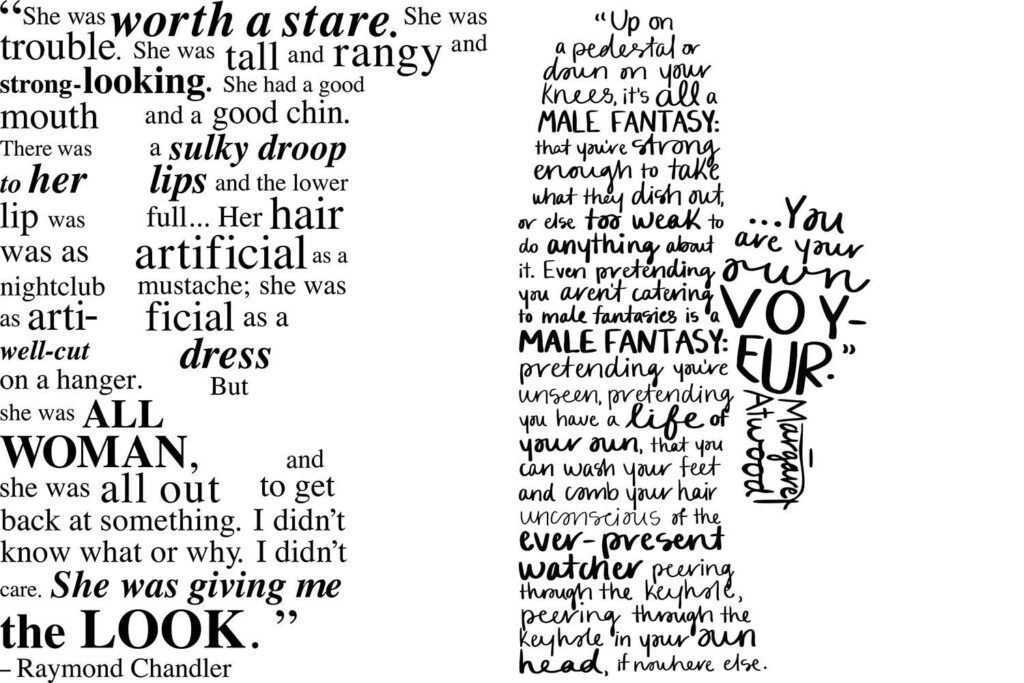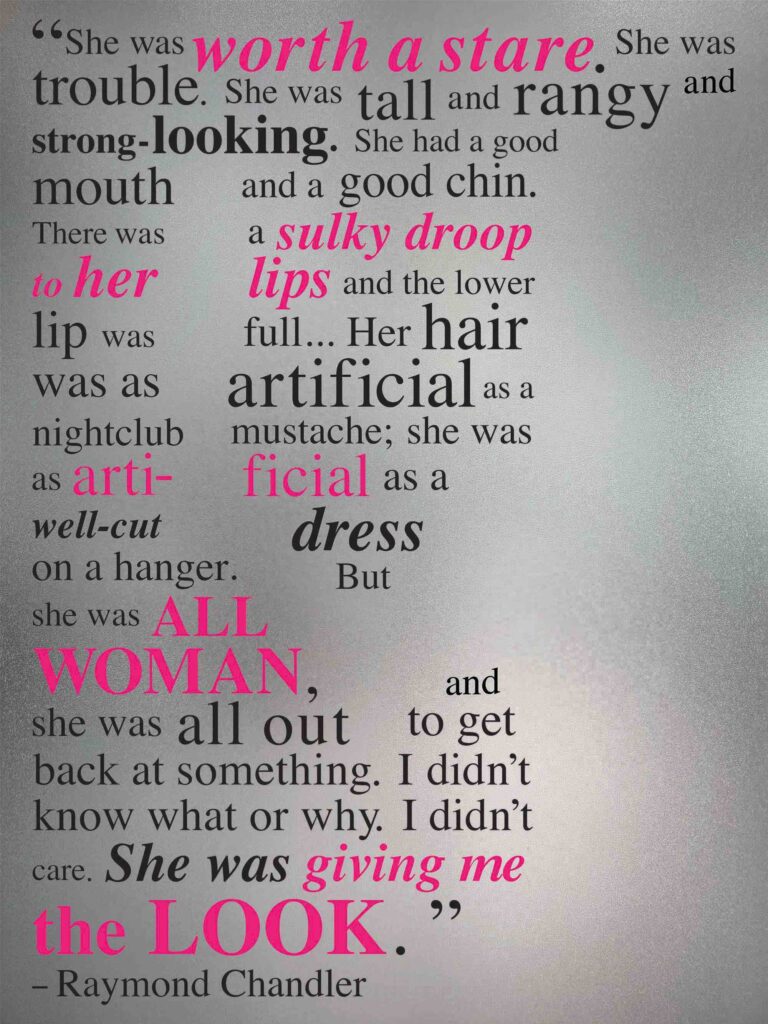Believer vs. Skeptic
Created in 2025
This project explores the male gaze: a masculine, heterosexual lens that frames women as objects of visual pleasure rather than as autonomous subjects. I aimed to visualize how women are described through the eyes of men—an outlook then adopted by society and ultimately internalized by women themselves—and how that cycle can be disrupted.
Using two opposing quotes—Raymond Chandler’s The Big Sleep as the “believer” and Margaret Atwood’s The Robber Bride as the “skeptic”—I examined how typography, layout, and composition can create a visual dialogue between objectification and resistance.
Believer: “I sat down on the edge of a deep soft chair and looked at Mrs. Regan. She was worth a stare. She was trouble. She was tall and rangy and strong-looking. She had a good mouth and a good chin. There was a sulky droop to her lips and the lower lip was full. She had a drink. She took a swallow from it and gave me a cool level stare over the rim of the glass. Her hair was as artificial as a night club mustache; she was as artificial as a well-cut dress on a hanger. But she was all woman, and she was all out to get back at something. I didn’t know what or why. I didn’t care. She was giving me the look.” — Raymond Chandler, The Big Sleep (1939)
Skeptic: “Male fantasies, male fantasies, is everything run by male fantasies? Up on a pedestal or down on your knees, it’s all a male fantasy: that you’re strong enough to take what they dish out, or else too weak to do anything about it. Even pretending you aren’t catering to male fantasies is a male fantasy: pretending you’re unseen, pretending you have a life of your own, that you can wash your feet and comb your hair unconscious of the ever-present watcher peering through the keyhole, peering through the keyhole in your own head, if nowhere else. You are a woman with a man inside watching a woman. You are your own voyeur.” — Margaret Atwood, The Robber Bride (1993)
Iterations
Inspired by Agnès Varda’s reflection that “the tool of every self-portrait is the mirror,” I centered each poster around a woman holding a mirror. In the believer poster, she poses seductively, looking away from the viewer, and gazes inward at the mirror, reaffirming herself as an object to be admired—a passive presence. In the skeptic poster, she takes a defiant stance, looks at the viewer straight-on, and turns the mirror outward, forcing the viewer to confront their own reflection and the act of looking at her.
Through several iterations, I simplified the silhouettes to focus on each woman’s interaction with the mirror and the surrounding text.
The believer’s text is set in Times, a clean sans serif, to evoke structure, control, and tradition. The text fills the negative space around her, symbolizing how the male gaze projects meaning onto women and confines her identity, defining her not by her own voice, but by what is said about her. The reflective material makes the viewer’s face occupy the space inside her silhouette, literally imposing their image and identity onto hers.
In contrast, the skeptic’s text—rendered in my own raw, personal handwriting—fills the positive space of her form, representing a woman who defines herself. The placement of the reflective material means the viewer’s reflection appears only in the background, never overtaking her form.
Final
To heighten the contrast, I used pink ink selectively: reinforcing stereotypes in the believer piece and subverting them in the skeptic.
The two posters below represent the final digital versions.
The final, physical posters were screen printed on layered acrylic and metal, creating a partially reflective surface that invites the viewer to see themselves—without allowing their reflection to overpower the subjects.










